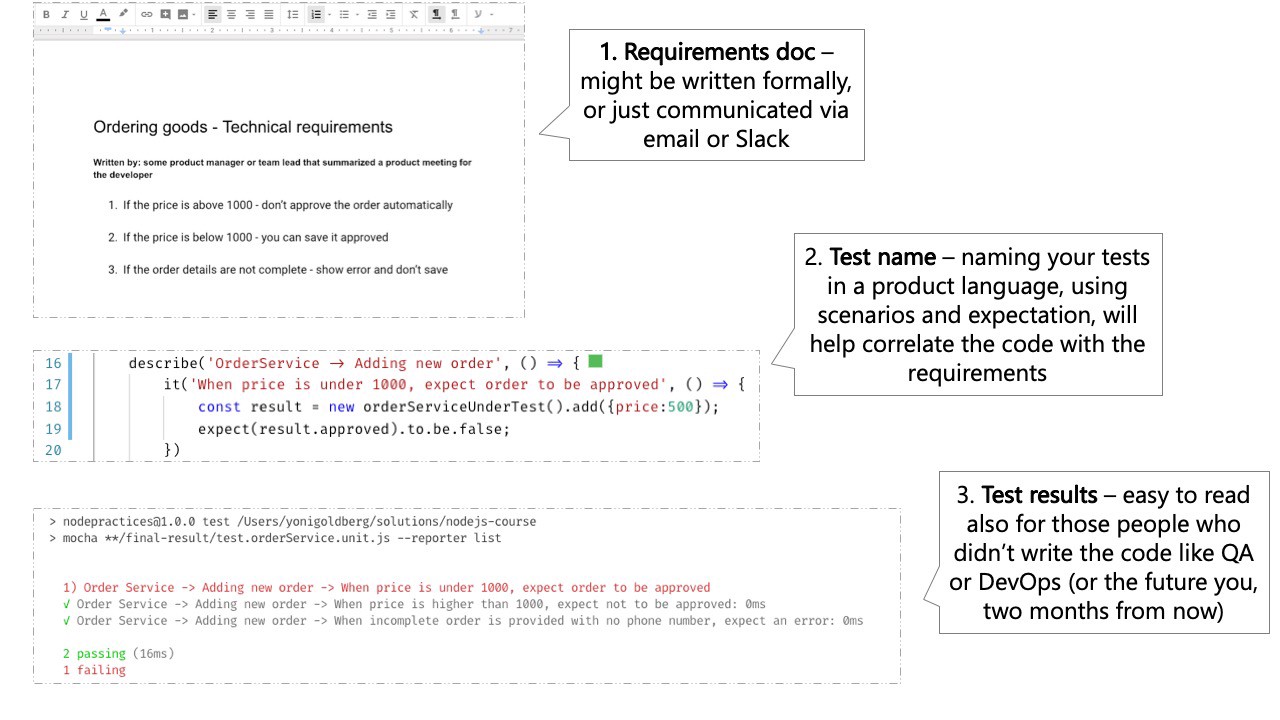⚪ ️ 1.1 Include 3 parts in each test name
✅Do: A test report should tell whether the current application revision satisfies the requirements for the people who are not necessarily familiar with the code: the tester, the DevOps engineer who is deploying and the future you two years from now. This can be achieved best if the tests speak at the requirements level and include 3 parts:
(1) What is being tested? For example, the ProductsService.addNewProduct method
(2) Under what circumstances and scenario? For example, no price is passed to the method
(3) What is the expected result? For example, the new product is not approved
❌ Otherwise: A deployment just failed, a test named “Add product” failed. Does this tell you what exactly is malfunctioning?
👇 Note: Each bullet has code examples and sometime also an image illustration. Click to expand
✏ Code Examples
:clap: Doing It Right Example: A test name that constitutes 3 parts
//1. unit under test
describe('Products Service', function() {
describe('Add new product', function() {
//2. scenario and 3. expectation
it('When no price is specified, then the product status is pending approval', ()=> {
const newProduct = new ProductService().add(...);
expect(newProduct.status).to.equal('pendingApproval');
});
});
});
:clap: Doing It Right Example: A test name that constitutes 3 parts

